We hope you enjoyed Part 1 of this article, which covered frequently asked questions about learning a foreign language in early childhood — and what makes Carousel’s program so special.
In Part 2, we’re exploring language development more generally, answering your questions about how infants and toddlers learn language(s)– and what you can do to bolster your child’s language development from the moment you bring home your new little bundle of joy!
***
Children begin learning language from the moment they are born!
From birth, infants and toddlers learn through their bodies and senses, and everyday experiences; they learn by doing and simply paying attention. As you read, talk, and interact in a warm and engaging way with your child as you go about your day, they learn to associate words with the fascinating world around them, the people they love, and the things going on in their daily life.
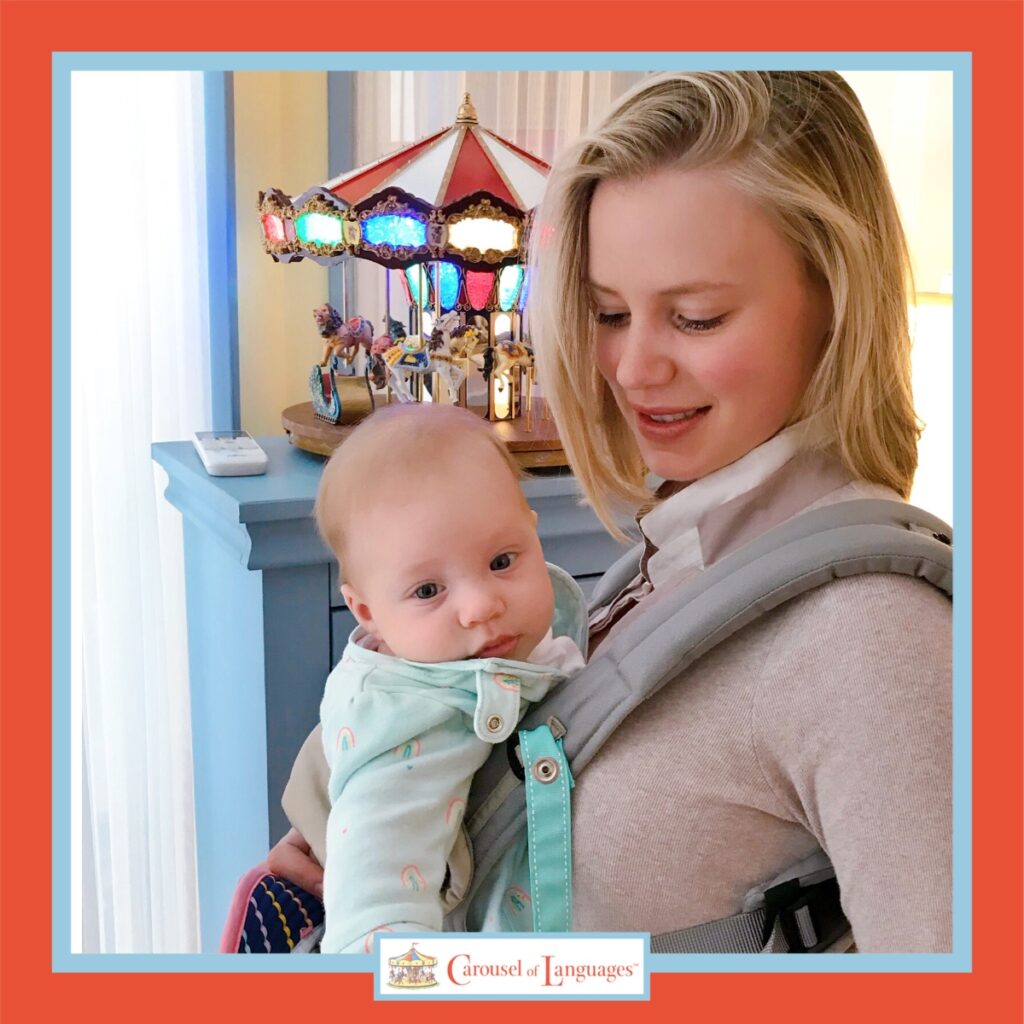
To learn language, infants require social interaction—talking, singing, reading, cuddling, playing, and looking at a real person’s face. These are key factors in the brain-shaping process.
There are two main components of language acquisition:
Receptive language – understanding what is said, written, or signed
Expressive language – producing language by speaking, writing, or signing
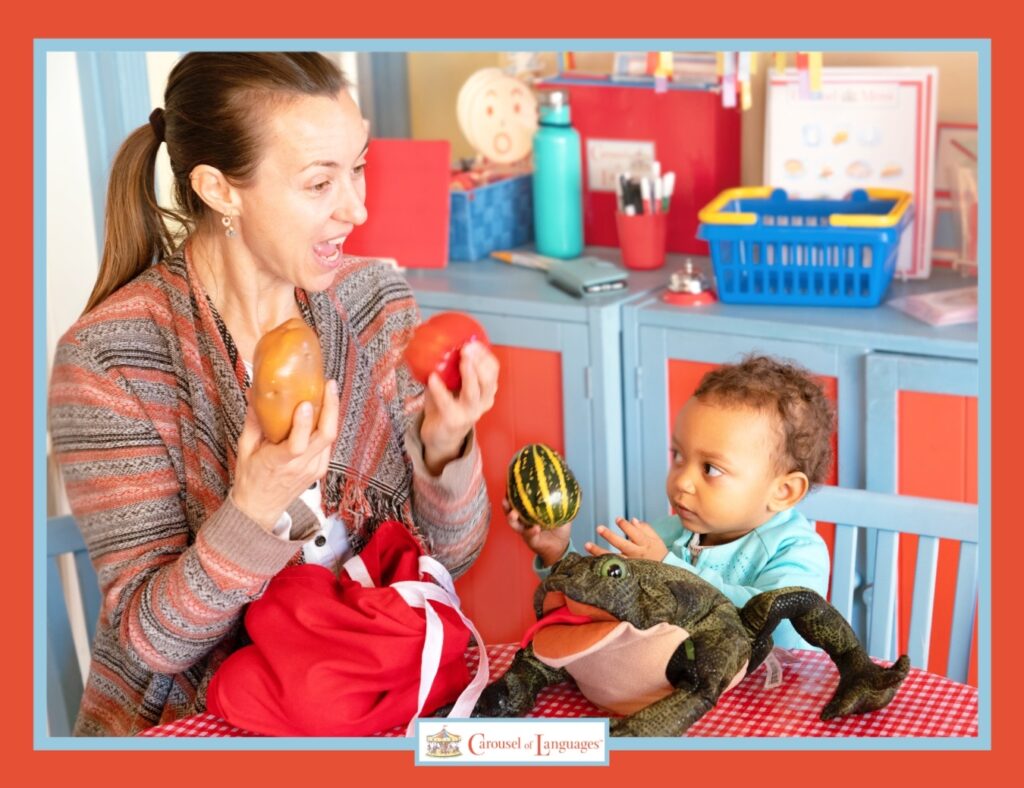
⭐️ How do you teach infants and toddlers to speak a language?
First, it’s important to know that children acquire languages, without effort or direct instruction, through interaction with adults and other children. They don’t need to be formally taught to speak, just as we don’t teach them to walk, eat, or smile.
Babies are born with the capacity to learn language, and they begin immediately. Although a newborn’s eyesight is limited, they’re able to focus effectively on objects and faces about 12 inches in front of them. This, of course, is the distance between the eyes of a babe in arms and the face of their loving parents and caregivers.
Infants rely on sensorimotor connections when listening to speech, and the developing brain requires positive experiences to form neural circuits. Warm, playful, loving, face-to-face interaction is crucial to both brain growth and success in language learning.
From the very earliest hours after birth, as you talk and coo to your beautiful new baby, they begin to imitate the shapes created by your lips and tongue.
Our instinctive patterns of infant-directed speech known informally as “motherese” or “parentese” — the sing-song way we talk to our babies and toddlers, in any language — may sound silly to adults, but it is a vital component of the language development process!
It is a natural method of elongating and highlighting the sounds of our native tongue for the infant’s ear. Characterized by simple vocabulary and sentence structure, high pitch and exaggerated intonation, repetition, and lots of questions, studies show that infant-directed speech helps the child to sort out the meanings, sounds, and sentence patterns of the language.
The most important factors in language development are exposure and motivation. When a child is continually exposed to a language, in a variety of circumstances and with numerous people, from a very young age, and they feel the need to use the language to communicate with those around them, they will acquire the language.
For this reason, a child can acquire two or more languages at the same time, as long as they are regularly interacting with speakers of those languages.
However, a child solely exposed to a language on TV or radio, without the warmth of human interaction, will not learn to speak the language.
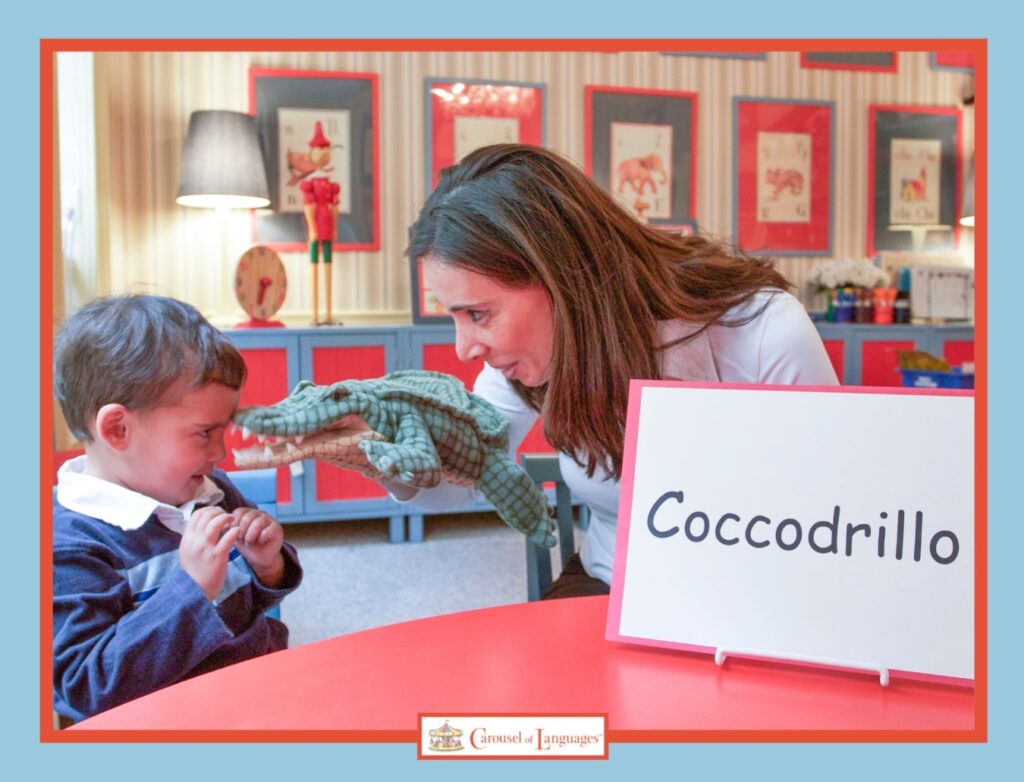
⭐️ How do I talk with my infant or toddler before they are verbal?
Just talk as you go about your day! Make conversation about what you’re doing.
It’s time to feed the puppy! Should we give Sparky some food? He’s wagging his tail. He likes his supper. Good dog Sparky.
When you’re in the supermarket with your little one, name and discuss items as you put them in the shopping cart. If your child is already verbal, ask them to count with you, or describe the color, shape, and taste of each food item. Let’s get some apples! 1, 2, 3, 4, 5! Mmmm. Yummy red apples.
Pay attention when your baby points to something. Joint visual attention is a form of non-linguistic communication, to which you can add a verbal component. For example, if you’re taking a walk outside and your child points, look and respond. “What do you see? Wow! Airplane! I wonder where it’s going? We’ll go on an airplane when we visit grandpa! Do you want to fly in the sky? Zoom zoom!”
These conversations might feel one-sided in the beginning, before your child speaks. But they’re absorbing an enormous amount of information just by watching and listening as you talk.
Read about “serve and return interactions” from Harvard University’s Center on the Developing Child.
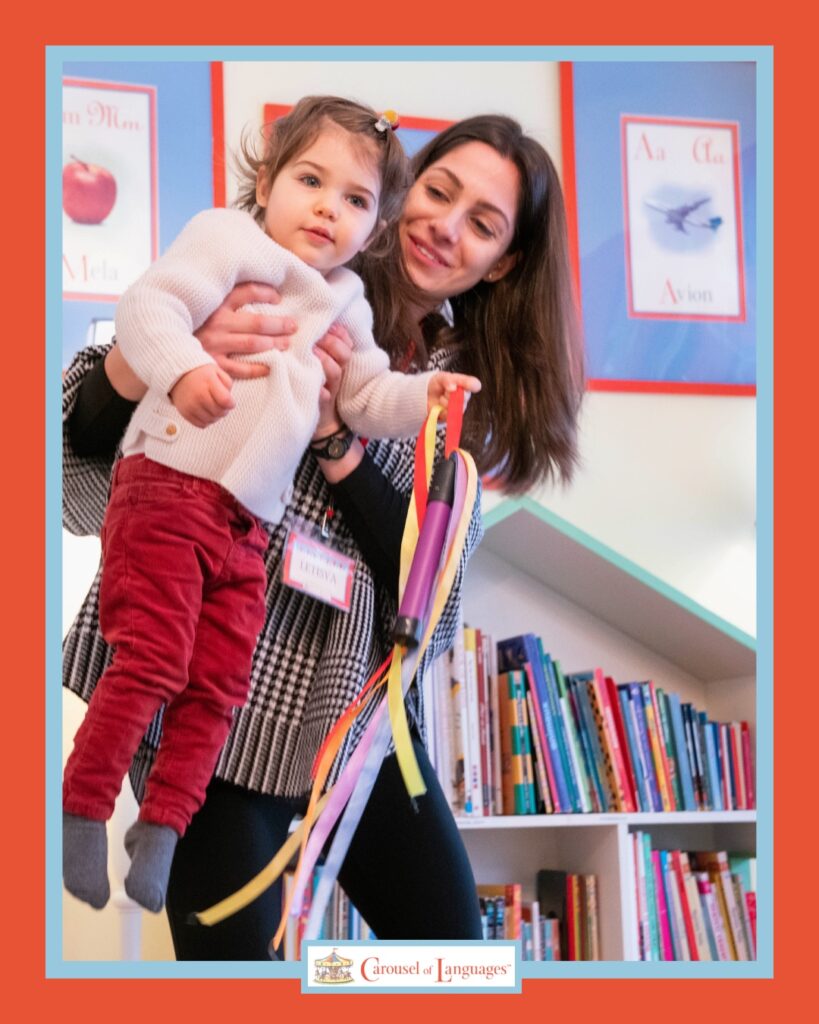
⭐️ Should I correct my child when they make mistakes in speech?
If your child says something in a way that isn’t quite right, you can answer with a subtle correction. For example, if they say, “Mommy eated the cookie,” you could respond, “Yes! Mommy ate the cookie!” This affirms that their observation or information was correct while gently recasting the statement in the correct form. You’re providing a great model of language and helping them learn and remember sentence structure.
You can remodel a statement even when they don’t make mistakes, expanding on what they’ve said with more information and vocabulary. Adding one or two more words helps children move onto the next stage of talking. If your child says, “Dog! Woof!” You can say, “That’s right! The dog is barking!”
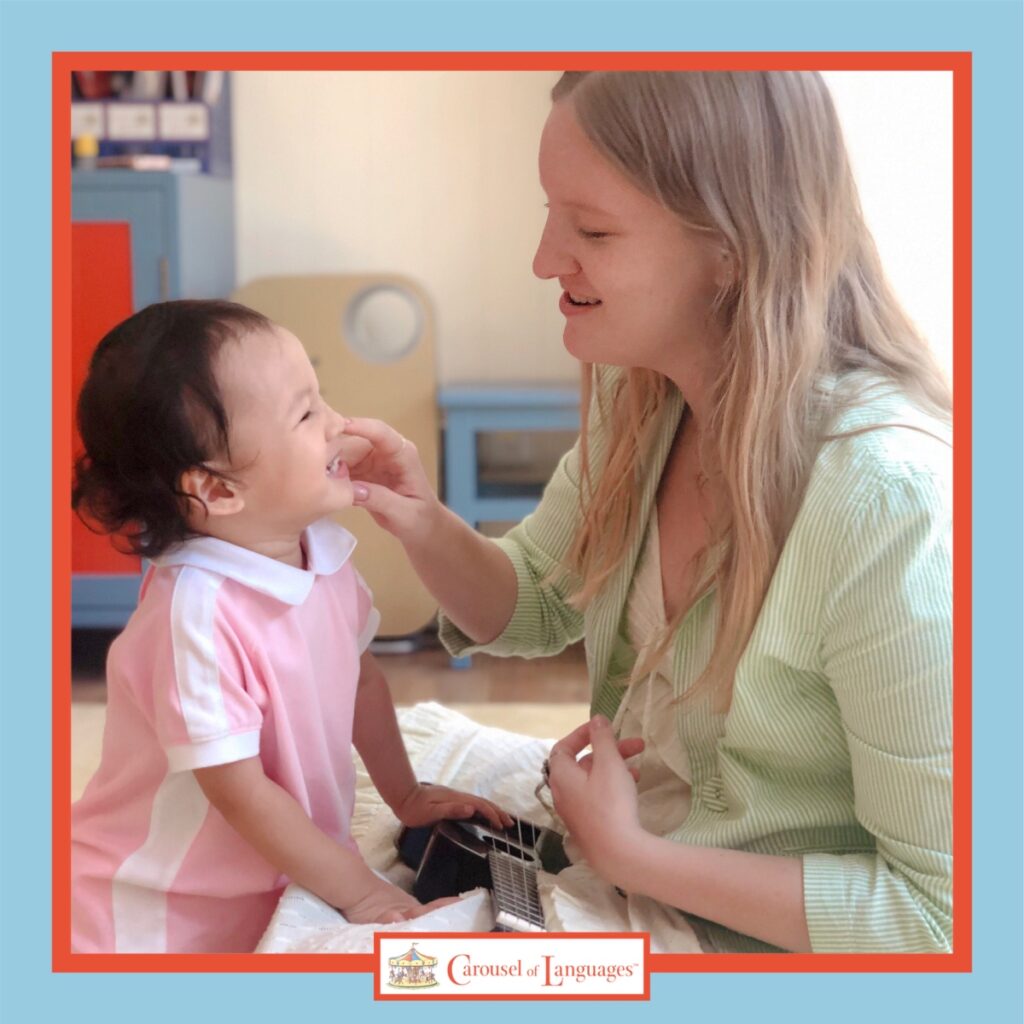
⭐️ How else can I support my child’s early language development at home?
Here are 5 more great tips for encouraging your child’s language development in daily life:
- Show interest in their words and sounds by copying what they say or the sounds they make. Model the correct version and build on what they say. For example, if your baby hands you their cup and says, “muk!” Say “Yes, milk! Do you want some milk?”
- Increase vocabulary by offering choices. “Do you want a banana or an apple?”
- Pair sounds and words with movement, gestures, and objects. Giving your child a visual will help them match the sound or word with the item or action. For example, transportation sounds, animal sounds, and simple actions like “Go! Stop!”
- Instead of prompting your child to say something they already know by simply repeating after you — such as “Look, it’s a red balloon! Can you say red balloon?” — cue them to say something on their own. “Look! I brought you something. What’s this?” Then, if your child says “balloon,” you can reinforce their answer and build on it, saying, “That’s right! It’s a big, red balloon! Yay!”
- Give them time to think. Children need more time than adults to process what they’ve heard and decide how to respond. Stay engaged and look at them while you wait for an answer. This patient waiting time is very important for young children.
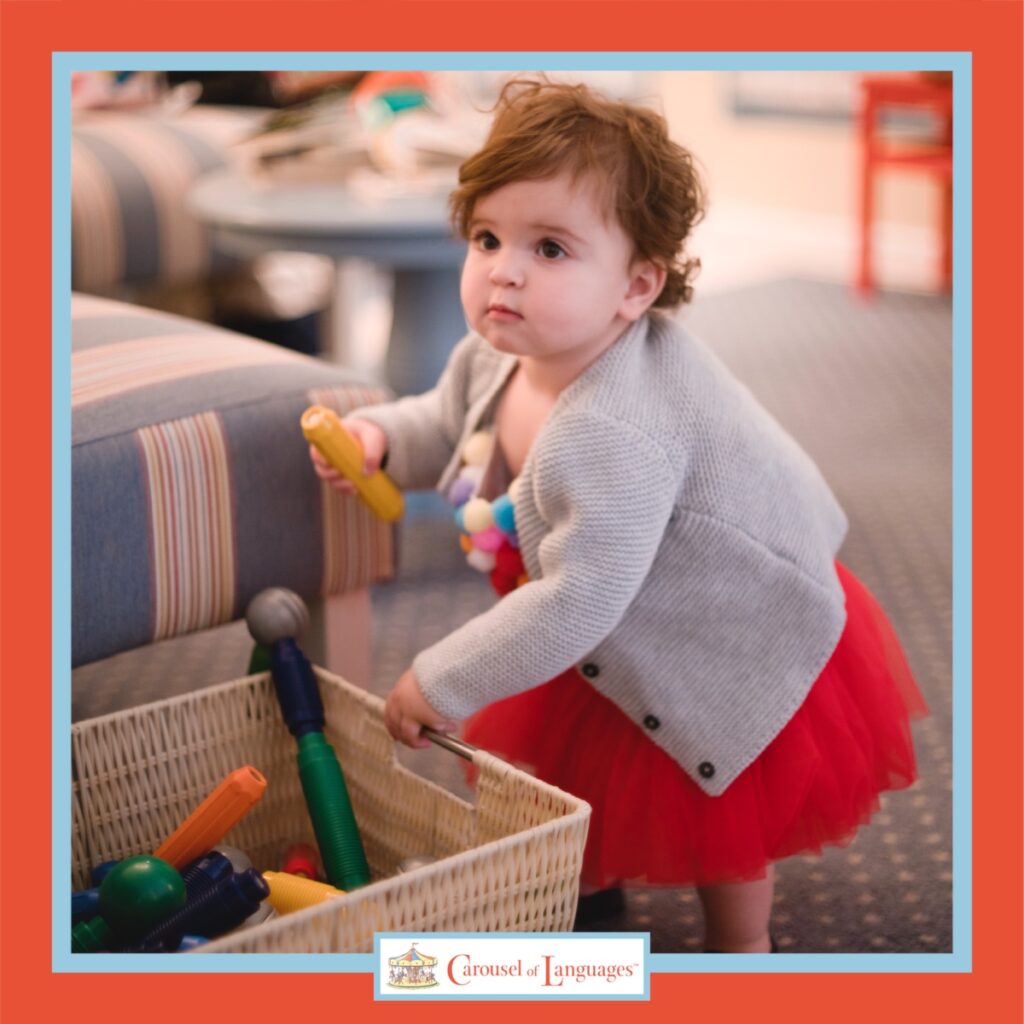
⭐️⭐️⭐️


